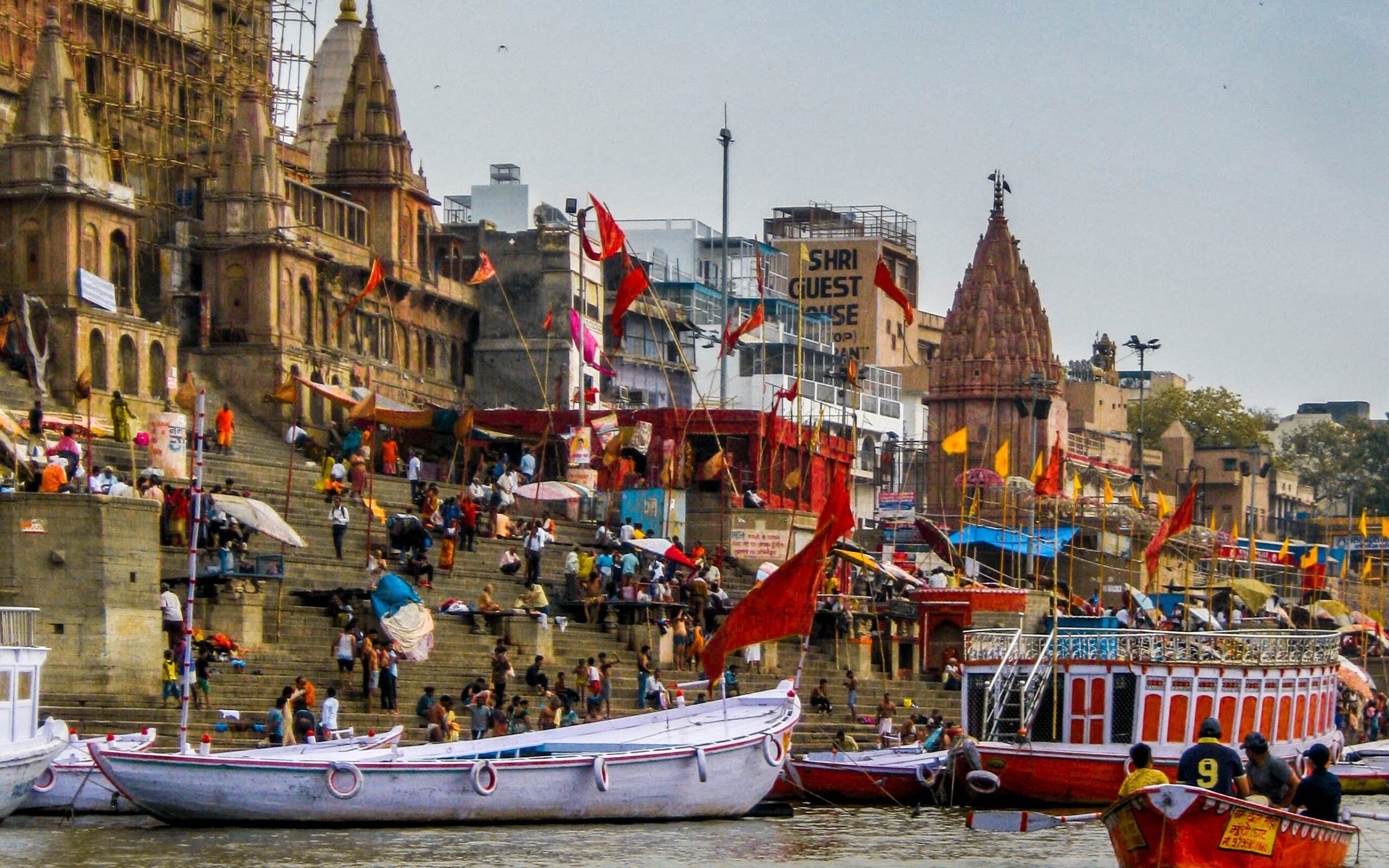The city of Varanasi, also known as Kashi, is located in the northern Indian state of Uttar Pradesh on the banks of the Ganges River and has a rich cultural and historical significance. It is one of the oldest continually inhabited cities in the world, with a history spanning more than three thousand years. This blog will examine Varanasi’s intriguing past by charting its beginnings and development over the ages.
Hindu mythology says that Lord Shiva, one of the most revered gods in the Hindu pantheon, built Varanasi. According to legend, he chose the city because of its distinctive spiritual energy and made it his home. One of Hinduism’s oldest sacred writings, the Rigveda, which is thought to have been written around 1500 BCE, refers to the city as Kashi. Varanasi is now one of the world’s oldest cities that has been inhabited continuously.

Varanasi developed into a hub of learning over the years, drawing academics, thinkers, and theologians from all across the Indian subcontinent. The famed Banaras Hindu University, which was established in 1916, is one of the oldest universities in the world, and it is located in the city. The city produced some of the finest exponents of classical Indian arts and was a significant hub for the development of Indian music and dance.
Varanasi was a significant political and cultural hub during the Mauryan dynasty’s rule in the third century BCE. One of the most powerful emperors in Indian history, Ashoka, visited the city and built countless pillars and edicts all around it. These inscriptions, which are still legible today, emphasised nonviolence and the precepts of Buddhism. The Gupta, Mughal, and British empires were just a few of the dynasties that ruled the city as it continued to prosper.
Varanasi developed and expanded during the centuries that followed, turning into a centre of trade and business where people from all over the world came to purchase and sell things. The Bhakti movement, a religious and social movement that emphasised devotion and adoration for God as the road to salvation, established the city as its centre throughout the mediaeval era. Many of India’s most renowned poets and mystics, including Kabir and Tulsidas, lived and worked in Varanasi as a result of the movement, which gave birth to a rich tradition of music, poetry, and literature.
Varanasi experienced a flourishing of the arts and sciences throughout the Mughal era. Akbar, the Mughal emperor, was a major supporter of the arts, and Varanasi’s literature, music, and architecture flourished under his reign. In addition to being the birthplace of the well-known musician Tansen, who played at Akbar’s court, Varanasi is also the location of some of India’s finest examples of Mughal architecture, including the Alamgir Mosque and the Ramnagar Fort.

The British East India Company ruled Varanasi in the 18th and 19th centuries, which had a profound impact on the infrastructure and economy of the city. Varanasi was connected to the rest of India and the rest of the globe via the railways and telegraphs the British introduced. They also developed a contemporary educational system, which helped the people of Varanasi acquire modern information and concepts. However, there were also drawbacks to the British occupation, such as the city’s numerous historic structures and monuments being destroyed.
Varanasi is still one of the most significant Hindu centres today and a popular destination for Hindu pilgrims from all over the world. More than 2,000 temples can be found in the city, including the well-known Kashi Vishwanath Temple, which is devoted to Lord Shiva. A trip to this temple is regarded as one of the most revered and fortunate events that a Hindu can experience in their lifetime.
In addition to its religious significance, Varanasi is renowned for its thriving culture and extensive past. The city is well known for its silk sarees, which are woven using age-old methods and prized for their beauty and excellence. Additionally, Varanasi is home to a large number of street food vendors who serve delicious and genuine Indian cuisine to tourists.
Varanasi has developed quickly in recent years as a result of government investments in infrastructure and contemporary conveniences to accommodate the expanding tourism sector. In addition, Varanasi has developed into a centre for innovation and entrepreneurship, drawing a number of startups and IT firms to locate there.
Varanasi yet maintains a strong and rich history steeped in its old traditions and culture despite its modernization and growth. Every temple and monument in the city is a reminder of its illustrious past, and its alleys and lanes are teeming with tales and legends.

Varanasi is a city with a long, three-thousand-year history that is extremely significant historically and culturally. Varanasi has been a key player in the advancement of Indian civilization, from its beginnings as a hub of learning and philosophy to its current status as a significant pilgrimage destination and cultural centre. It continues to be a city of immense significance to Hindus and a popular travel destination for tourists from all over the world.
Immerse yourself in the captivating blend of luxury and heritage at our Tree House Resort in Varanasi. Experience breathtaking scenery while delving into the city’s fascinating history. Reserve your stay today and embark on a journey of indulgence, where the charm and appeal of Varanasi meet the comforts of our resort.







